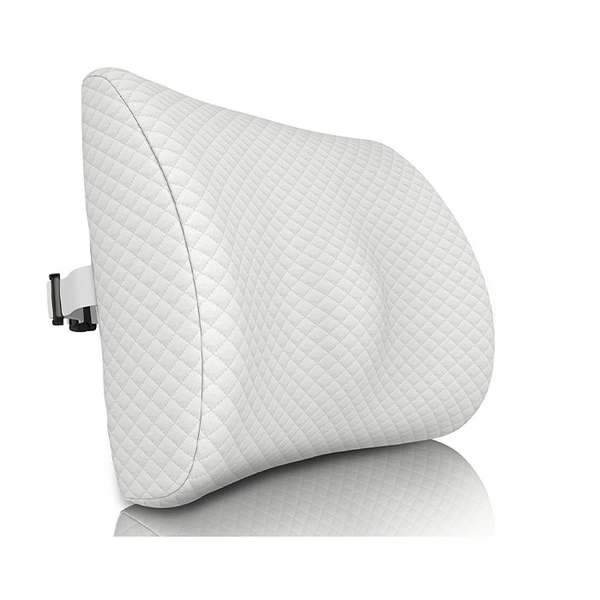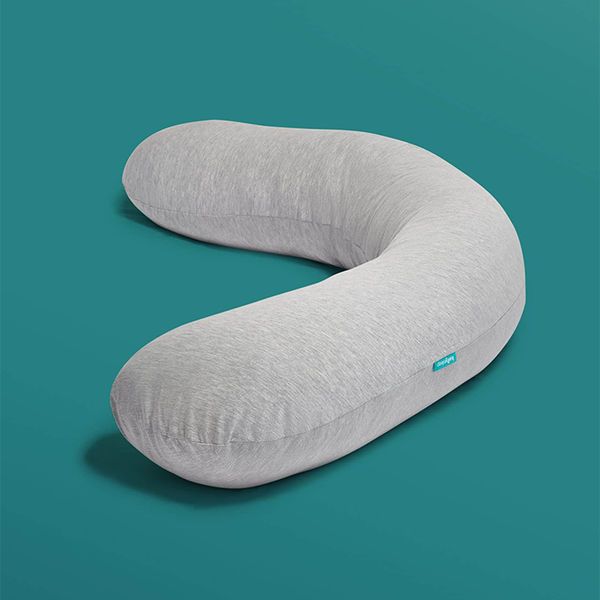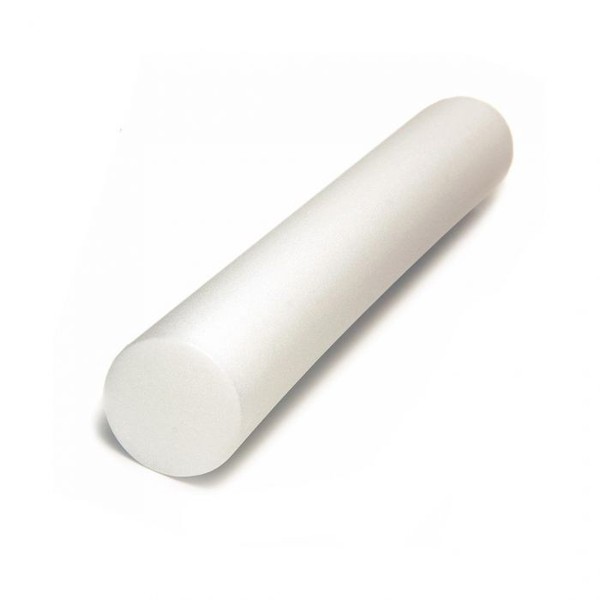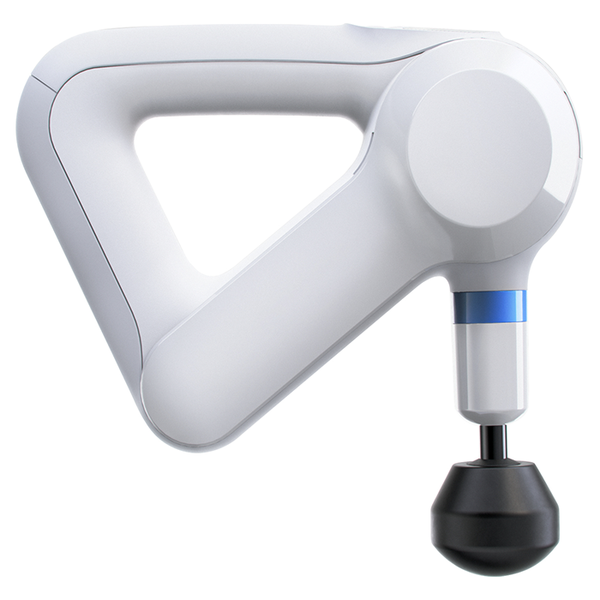How To Fix Your Posture
Nadia Alibhai, osteopath & owner of Back 2 Wellbeing, says…
A lack of movement will make muscles more tense
Remember the saying ‘motion is lotion’. Our joints contain a thick liquid called synovial fluid, which lubricates our joints. However, a lack of movement means your joints don’t get the nourishment and hydration they need, which can lead to stiffness and aches. Working from home has had a significant impact on our posture – from not taking enough walking breaks to incorrect desk set-up. While walking is great, it’s the minimum you should be doing for better posture. Work on strengthening your core, as a weak core can contribute to slouching; take up yoga to strengthen and elongate the spine; and consider Pilates to build strength for better balance and flexibility.
Looking after your fascia can help
Fascia is a structure of connective tissue that quite literally holds your body together. Fascia surrounds groups of muscles, nerves and blood vessels. However, fascia is clever and quickly adapts to postural habits to protect itself. Restrictions in fascia can exacerbate postural problems, making them a permanent issue. When fascia is stuck, it squeezes whatever is around it, such as nerves and blood vessels, which can lead to headaches and pain. To improve the health of your fascia, get into the habit of foam rolling; stretch for at least ten minutes every day; have regular massages and trigger point therapy; and use saunas, ideally an infrared sauna, to decrease muscle soreness.
Visit Back2Wellbeing.co.uk
Samuel Marland, PT specialising in rehab & prehab, says…
Sitting at a desk is wreaking havoc with your spine
Studies show we’ve become a sedentary nation, with millions of us regularly skipping our allocated lunchbreak. It’s extremely difficult to maintain good posture sitting at your desk for eight hours plus every day, which is why there has been an increase in poor posture and kyphosis (aka, curvature of the spine). If you struggle with regular headaches, poor circulation, breathing issues and fatigue, your posture could be to blame. A rounded back and shoulders and a curved spine causes unwanted muscle tension, which if left untreated will cause problems. Get into the habit of checking your posture every 20 minutes when sat at your desk. Once the timer goes off, stand up and ‘reset’ yourself by squatting to regain movement. When sitting back down, place your hands on the table to realign your spine with a straight back.
Lumbar support is crucial
If your budget allows, investing in a desk chair which supports the natural curve of your lumbar spine is worth its weight in gold. If this isn’t an option, consider a lumbar support cushion, which you can place on your chair to achieve the same results.
Your eyes do play a part
When walking, our eyes play a significant role in our course of direction. It’s therefore crucial that we remember certain cues for good posture while moving. For example, avoid looking down at your feet or phone for too long when walking – instead remember that your eyes should be straight ahead of you, with your chin up and neck aligned with the spine. If you’re carrying a shoulder bag, remember to regularly switch the side you’re carrying the bag on to ensure even weight distribution.
Don’t underestimate the effect sleep has on posture
Research shows there is an optimal way for humans to sleep. Lie on your side with your knees just shy of 90º (also known as the fetal position). Ensure your head is supported with one pillow and place your hand under the pillow, with your other hand placed under your head. A supporting pillow can also be placed between the knees to maintain hip alignment – this is particularly important if you’re a side sleeper. Try to avoid sleeping with more than one pillow at all costs.
Building strength is important, but technique matters
One of the simplest ways to improve the health of your fascia, and in turn your posture, is exercise. A good place to start is with movements designed to test the range of movement at the spine with strength training. Building strength in the upper back muscles can help, and resistance bands are a great way to do this. At the same time, strengthening the hips can also help. If you are using weights, be sure to think about technique – it’s not uncommon for beginners to over-work the chest, which can exacerbate the rounding of the shoulders.
Visit SamuelMarlandPT.co.uk
Sarah-Jane Watson, massage therapist, says…
If you sit in a chair all day, do so properly
Make sure you are taking the full support of your desk chair by sitting all the way to the back, instead of perching on the edge. Place a cushion behind you if necessary. The height of your chair should allow your knees to be lower than your hips – consider a support for your feet if they don’t completely reach the ground. The height of your chair should also be adjusted so that your wrist and forearms are straight and level with the floor while typing. Your computer screen positioning is key, too. Ensure it’s directly in front of you and at eye level. A screen that is too high causes the chin to poke up and scrunches the back of the neck; too low and it will contribute to developing a rounded upper back, which can cause shoulder and upper back stiffness.
A post-work stretch could make all the difference
Sitting in the incorrect position for long periods causes tightness in the hip flexors, which in the long-term can compress the lower back, leading to pain. Taking time to stretch your hip flexors at the end of the day will help release and lengthen them. To help combat hunching over your computer screen, try lying with a rolled-up yoga mat placed along your bra line to encourage the chest to open.
Visit SarahJWatson.com
Joelle Pettitt, yoga instructor, says…
It all starts from the feet
Make sure your weight is balanced on both feet when standing, with the weight stacked over your pelvis evenly. Shoes can have more of an impact than you might think, so try to be barefoot as much as possible, as this will help improve posture as well as stretch and strengthen your feet and ankles. High heels will do your posture no favours as they cause a forward-leaning posture.
Keeping your head above your shoulders is a good place to start
Be mindful of how you are standing – notice if you have a tendency to lean against something or on one leg more than the other. Then, bring most of your weight onto the balls of your feet, and focus on stacking your hips over your feet, your shoulders over your hips and slightly tucking the chin to elongate the spine. Remember it’s important for the weight of your skull to be supported through your spine and your bodyweight supported by your pelvis and legs. By disrupting the natural ‘S-curve’ of the spine, you put excess force through your vertebrae, and this can lead to an array of problems. By spending time with your head jutting forward (as many of us inevitably do when looking at a screen), this can cause us to shift the curve at the lower back and cause pain. Instead, try to hold your smartphone higher (closer to eye height) – think about the Victorian era and how they used to hold their books at eye level to improve posture.
Visit NelumboYoga.co.uk
Give your posture a helping hand with these expert picks…








DISCLAIMER: We endeavour to always credit the correct original source of every image we use. If you think a credit may be incorrect, please contact us at info@sheerluxe.com.


